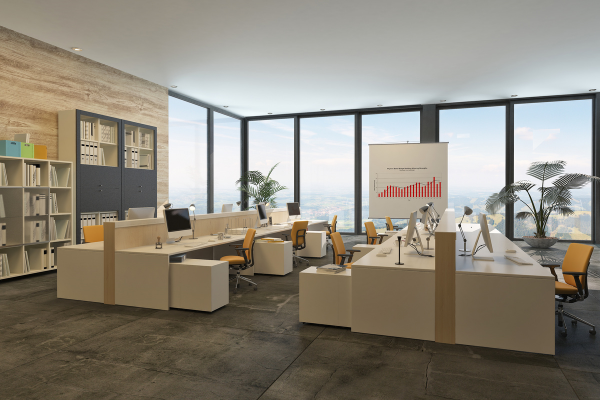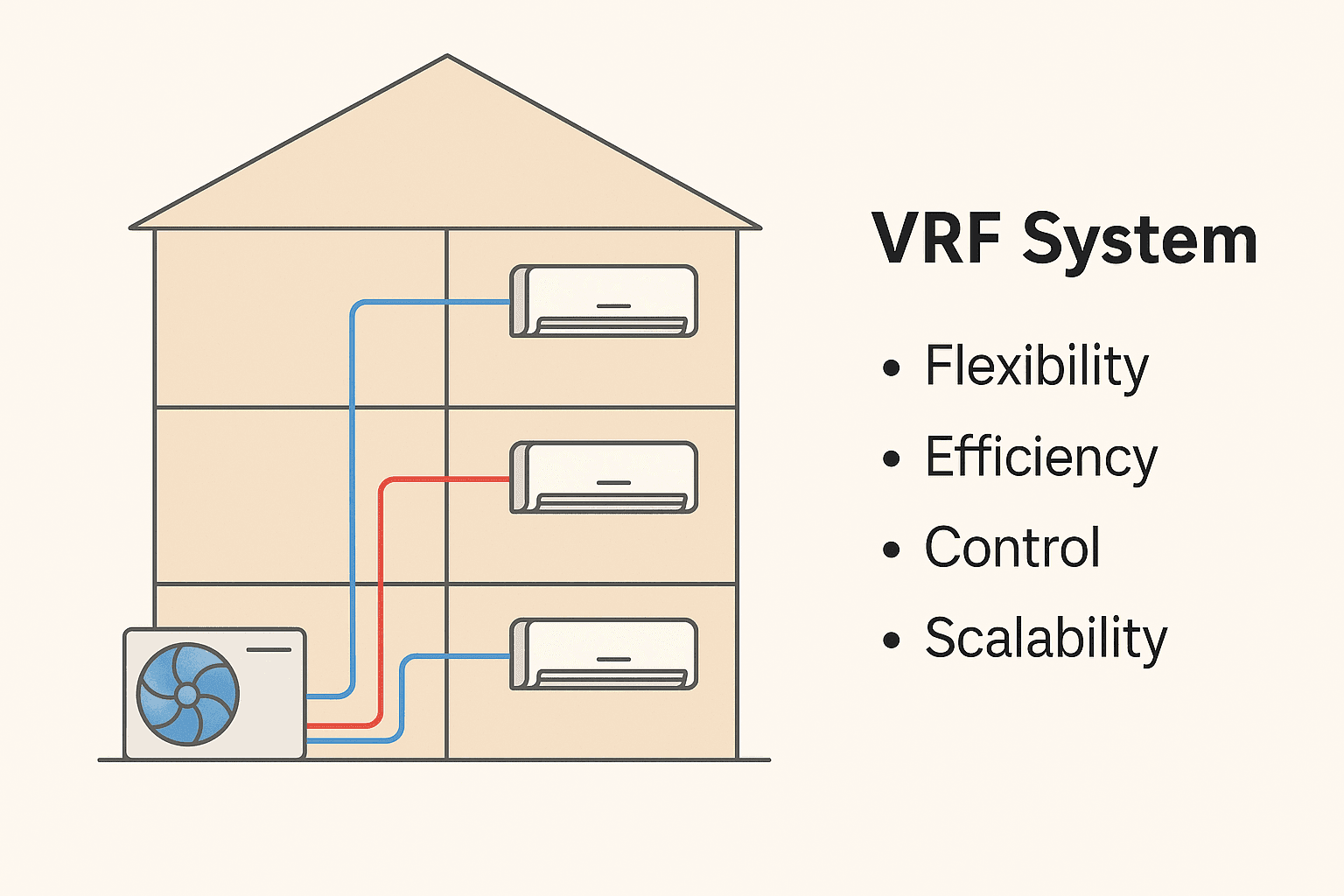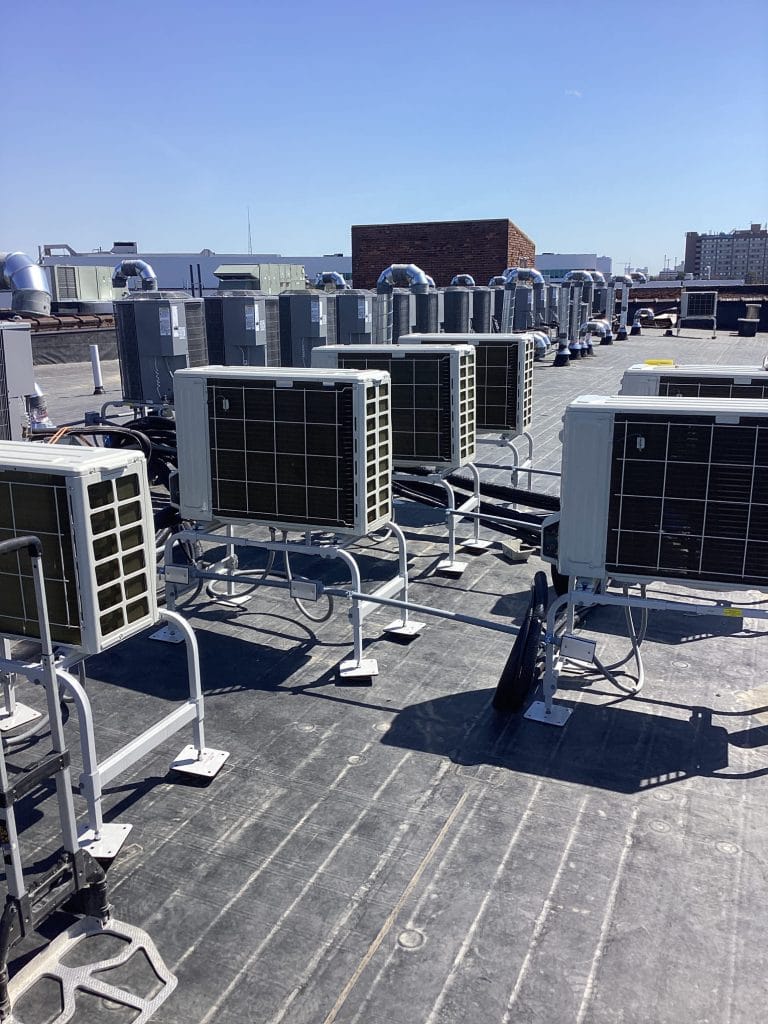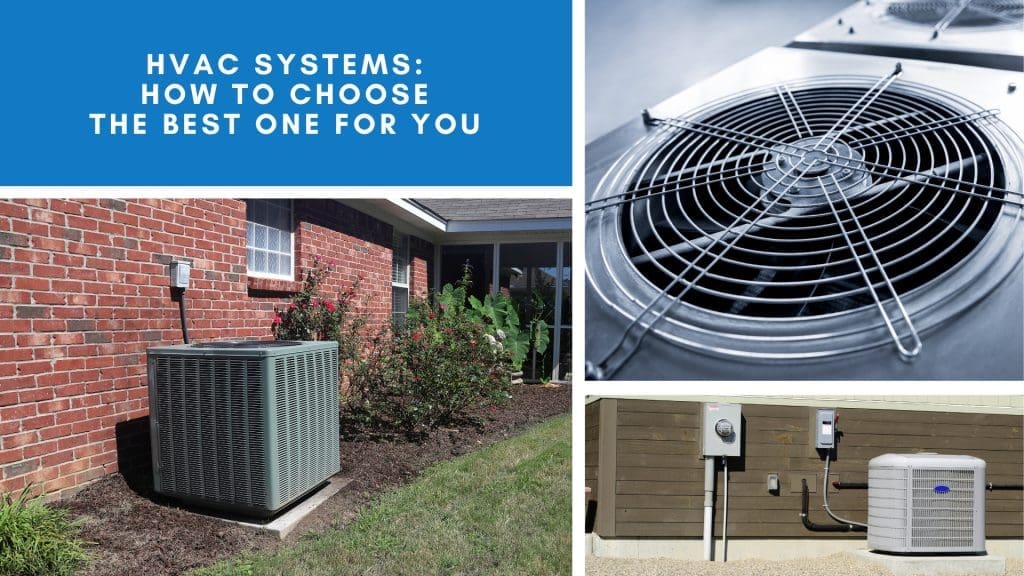Welcome to our comprehensive guide on Variable Refrigerant Flow (VRF) systems. If you’re a small business owner, a work-from-home professional, or a stay-at-home mom, this guide is for you.
VRF systems are a game-changer in the world of heating, ventilation, and air conditioning (HVAC). They offer superior comfort, energy efficiency, and flexibility compared to traditional HVAC systems.
But what exactly is a VRF system? How does it work? And why should you consider it for your home or business?
In this guide, we’ll answer all these questions and more. We’ll delve into the nuts and bolts of VRF systems, explaining their components and operation. We’ll also highlight the benefits of these systems and their various applications. Understanding VRF Systems: Benefits and Applications is key to making informed decisions about whether this technology is right for you.
So, let’s dive in and explore the world of VRF systems. By the end of this guide, you’ll have a solid understanding of these systems and their potential to transform your indoor comfort experience.

What is a VRF System?
VRF stands for Variable Refrigerant Flow. It’s a type of HVAC technology gaining popularity for its efficiency and flexibility. Unlike traditional systems that use one large unit, VRF systems use multiple smaller units that can be controlled independently.
Each indoor unit receives a precise refrigerant amount, allowing for customizable comfort levels. This makes VRF systems ideal for spaces with varying climate control needs, from cozy homes to bustling commercial areas.

So, what sets VRF systems apart? Here are some key characteristics:
- Flexibility: Adaptable to different room sizes and layouts.
- Efficiency: Uses energy efficiently for specific zones.
- Control: Offers individual room temperature settings.
- Scalability: Can be expanded with ease for future needs.
The name VRF hints at the core function: varying refrigerant flow based on demand. This technology ensures that comfort is balanced with energy saving. Instead of an “all-or-nothing” approach, it fine-tunes delivery based on current conditions.
Energy efficiency is not just a buzzword with VRF systems. They can adapt to partial load conditions, running only as needed. This contributes to lower energy bills and environmental impact, a win-win for conscious consumers and business owners.
Adoption of VRF systems is growing. They cater to those wanting precise temperature control without wasting energy. As technology advances, VRF systems are becoming the preferred choice for many looking to upgrade their HVAC systems.
The Components of a VRF System
To appreciate the efficiency of VRF systems, it’s essential to understand their components. The system includes several distinct parts working in harmony.
Firstly, the outdoor unit is the heart of the system. It distributes refrigerant to various indoor units based on demand. This component is designed to handle different loads, adjusting seamlessly as the need shifts.
Indoor units come in different styles like wall-mounted, ceiling cassette, and ducted units. They cater to the specific needs of various spaces, enhancing flexibility. These units allow for design creativity and installation options that suit different environments.
The control system is crucial for the VRF operation. It regulates the flow of refrigerant, ensuring optimal temperature control. Smart controllers can integrate with building management systems for advanced management.
Inverter technology in VRF systems plays a vital role. It adjusts the compressor speed, allowing precise control of the refrigerant flow. This adaptability makes VRF systems energy-efficient and cost-effective over time.
Lastly, the communication network connects all components. This ensures seamless information flow between units, maintaining efficiency. This digital network allows for timely adjustments and remote monitoring if needed.
How VRF Systems Work
VRF systems might sound complex, but they operate on a straightforward principle. They adjust refrigerant flow to meet the specific needs of each zone.
To start, the outdoor unit compresses the refrigerant. It’s then distributed across several indoor units at the required temperature. This distribution is managed dynamically, adapting to changes in demand.
Each indoor unit’s needs can be independently controlled. This means one room could be cooling while another is heating. VRF systems use sensors to continuously monitor room conditions and adjust the refrigerant accordingly.
An energy-efficient feature of VRF systems is their ability to transfer heat. This is particularly useful in buildings where different areas have different temperature requirements. This capability helps save energy by balancing the overall load across zones.
The inverter-driven compressor adjusts its speed based on demand. This ensures the system runs efficiently without unnecessary energy use. As a result, VRF systems perform well in both full and partial load conditions.
Seamless operation is vital. The system relies on a control network that manages adjustments in real time. This network ensures that each zone is comfortable and efficiently managed without user intervention.
Overall, VRF systems offer a modern solution for climate control. Their adaptability, efficiency, and customizable options make them a compelling choice for many. Whether you’re interested in upgrading your HVAC system for a home or business, VRF systems present an attractive alternative.
Benefits of VRF Systems
VRF systems bring numerous advantages to the table, making them a standout choice for both residential and commercial applications. One of the key benefits is energy efficiency. By delivering the precise amount of refrigerant needed, VRF systems minimize energy wastage, leading to substantial cost savings on energy bills.
Another major benefit is the customizable comfort they provide. VRF systems allow users to set different temperatures in each room or zone, ensuring that everyone’s comfort preferences are met, irrespective of their location within the building.
The flexibility of VRF systems means they can be adapted to suit a variety of building layouts. This adaptability ensures that whether you are retrofitting an old structure or designing a new one, VRF systems can be seamlessly integrated.
Moreover, VRF systems operate quietly. Unlike traditional HVAC units that can be quite noisy, VRF systems are designed to function with minimal sound, providing a peaceful environment conducive to both work and relaxation.
The scalability of VRF systems is another attractive feature. As your heating and cooling needs change, whether due to expansion or reduction, VRF systems can easily be adjusted or expanded to meet these new demands.
Installation is a breeze, too, thanks to the minimal ductwork required. This not only makes the installation process quicker and less invasive but also reduces the potential for air leakage that could diminish the system’s efficiency.
In summary, the benefits of VRF systems include:
- Energy Efficiency: Lowers energy costs significantly.
- Customizable Comfort: Provides personalized temperature settings.
- Flexibility and Scalability: Easily adapts and expands to changes.
- Quiet Operation: Keeps the noise level down.
- Easy Installation: Requires less ductwork.
Energy Efficiency and Customizable Comfort
At the heart of VRF systems is their impressive energy efficiency. Unlike traditional HVAC systems that often operate at full capacity regardless of need, VRF systems adjust their output based on specific requirements. This modulation allows them to conserve energy, reducing overall consumption and, consequently, utility bills.
Customizable comfort is a standout feature of VRF systems. You gain the freedom to fine-tune the temperature in each area according to personal preferences or changing needs throughout the day. This means one room can maintain a cozy warmth while another stays refreshingly cool.
The ability to set different temperatures in different zones provides enhanced comfort control. It transforms how spaces are used, accommodating various activities and preferences with ease. Whether it’s an office space or a home, VRF systems adapt to deliver optimized comfort where it’s most needed.
Quiet Operation and Design Flexibility
VRF systems score high marks for their quiet operation. Unlike older HVAC systems that can be disruptive with their noise, these systems are engineered to maintain a tranquil environment. This is a boon for homes, offices, and even classrooms where peace and quiet are valued.
Design flexibility is another hallmark of VRF systems. These systems integrate seamlessly into diverse architectural designs, offering a variety of indoor unit options. From sleek wall-mounted units to compact ceiling cassettes, the design possibilities are plentiful.
The lack of extensive ductwork needed for VRF systems also contributes to their design flexibility. This allows architects and engineers to plan with fewer constraints. Whether retrofitting an existing building or starting from scratch, VRF systems offer the versatility to match unique structural or aesthetic needs. This combination of quiet operation and flexible design makes VRF systems an appealing solution for modern climate control challenges.
VRF vs. Traditional HVAC Systems
When it comes to choosing between VRF systems and traditional HVAC systems, understanding their differences is crucial. Traditional HVAC systems, often reliant on a single thermostat, can be less efficient. They use the same energy level regardless of need, which can lead to energy wastage.
Conversely, VRF systems offer several advantages over traditional systems. One major distinction is their ability to control refrigerant flow precisely. This precise control allows VRF systems to adjust cooling or heating to exact room demands, improving energy efficiency significantly.
Another advantage is the individualized zone control provided by VRF systems. Each zone can be independently managed, allowing personalized comfort settings. This feature is especially useful in homes and office environments, where different rooms may have different temperature requirements.
Here’s a quick comparison of key differences:
- Energy Efficiency: VRF systems adjust to specific needs, unlike traditional systems which often run at full capacity.
- Zone Control: VRF systems offer more customizable temperature settings.
- Noise Levels: VRF systems tend to operate more quietly.
The choice between VRF and traditional HVAC systems should consider these factors to maximize comfort, efficiency, and long-term cost savings.
Zoning and Temperature Control
Zoning is a game-changer when it comes to temperature control. With VRF systems, each zone within a building can be set to a different temperature. This means rooms can be individually adjusted based on usage and preference.
For a small business owner, this zoning feature allows different parts of the office to cater to various needs. Meeting rooms can stay cooler, while working areas maintain a warmer temperature, optimizing comfort for all employees.
In residential settings, zoning ensures that family members can set their rooms to their personal comfort levels. It offers unparalleled flexibility and control over your environment, adapting to your daily activities and requirements seamlessly.
Applications of VRF Systems
VRF systems have gained popularity for their versatility and efficiency. They are suitable for a variety of applications, making them an excellent choice for different environments. Whether it’s a high-rise building or a quaint suburban home, VRF systems deliver the flexibility and capability to meet diverse needs.
Commercial buildings benefit greatly from VRF technology. Office spaces, restaurants, and hotels are prime examples of places where VRF systems shine. They accommodate varying cooling and heating demands across multiple floors or zones. This adaptability translates to lower energy costs while ensuring comfort for all occupants.
In educational institutions, VRF systems provide the opportunity to regulate temperatures in classrooms, labs, and libraries independently. This capability ensures a conducive learning environment, tailored to suit specific requirements throughout the day.
For healthcare facilities, maintaining an optimal temperature is critical. VRF systems can deliver precise climate control, essential for patient comfort and equipment protection. Their reliability helps ensure that hospitals and clinics operate seamlessly, regardless of external climate conditions.
Applications of VRF systems are varied, including:
- Office buildings and commercial spaces
- Hospitality industry settings like hotels
- Educational institutions
- Healthcare facilities
- Residential multi-family dwellings
The adaptability of VRF systems makes them a smart choice for both new construction and retrofit projects. Their comprehensive benefits drive efficiency and satisfaction in any setting.
Commercial and Residential Uses
In commercial environments, VRF systems are a perfect match. They accommodate diverse needs across different zones. An office can have precise temperature settings for work areas, meeting rooms, and common spaces, all integrated into one seamless system.
For residential applications, VRF systems shine just as brightly. They’re an excellent solution for multi-family homes and single-family residences. Homeowners enjoy personalized comfort by adjusting temperatures in individual rooms, catering to each family member’s preference.
VRF systems also integrate well with smart home technology. By connecting to smart devices, users can control their system remotely. This ease of use enhances comfort and ensures that energy usage is efficient and economical.
The ability to cater to both commercial and residential settings with such precision places VRF systems at the forefront of modern HVAC solutions. Whether for a bustling office or a cozy home, these systems offer impressive customization and control.
Choosing the Right VRF System
Selecting the perfect VRF system can be a bit daunting. With so many options, it’s important to consider your specific needs. Start by assessing the size of the space and its usage patterns.
Consider the efficiency and capacity requirements. A system that’s too small might struggle, while an oversized system could waste energy. Consulting with a VRF professional can ensure the system you choose meets your demands effectively and efficiently.
Budget considerations are also critical. While VRF systems can have a higher upfront cost, their long-term benefits often offset this. Look into any potential energy rebates or incentives, which can make a significant difference in overall costs.
Leading Brands and Technologies
Navigating the world of VRF systems involves recognizing trusted brands. Companies like Mitsubishi, Daikin, and LG are leaders in this space. They offer reliable products with advanced technology, ensuring top-notch performance.
Innovation is key in VRF technology. Brands integrate smart features allowing seamless connection to mobile devices. This ensures users have control over their climate systems from anywhere, enhancing convenience.
It’s also essential to understand the technology behind these systems. Look for inverter-driven compressors and advanced heat recovery features. These elements not only enhance efficiency but also extend the lifespan of the system, providing value for years to come.
Installation and Maintenance of VRF Systems
Installing a VRF system is not a task for the untrained. It requires expertise to ensure the system operates at its best. A professional installation guarantees efficiency and a longer lifespan for your investment.
The setup involves precise calibration of components and programming. This ensures each unit communicates seamlessly for optimal performance. Missteps in installation can lead to inefficiencies and potential system failures.
Moreover, each installation is unique, tailored to the building’s architecture. Proper installation minimizes disruptions to your space and maximizes climate control benefits. Think of it like a custom-tailored suit, where every detail matters.
Don’t forget the role of regular maintenance. Scheduled checks keep the system running smoothly and prevent costly repairs. Consistent upkeep not only extends the system’s life but maintains energy savings.
The Importance of Professional Installation
Engaging an experienced technician for installation can’t be overstated. Professionals understand the nuances of different VRF systems, like Mitsubishi or Daikin. This expertise ensures each component functions harmoniously.
Errors in installation can lead to reduced system efficiency or even damage. Hiring a professional mitigates these risks. It’s a solid investment towards a hassle-free, efficient system.
Maintenance and Servicing
Routine maintenance is crucial for VRF systems. Regular servicing checks crucial components like refrigerant levels and electrical connections. This helps maintain system efficiency and avoid unexpected breakdowns.
Consider a maintenance plan with a certified contractor. They can catch potential issues early, preventing costly repairs. Scheduled servicing ensures the system stays in top condition, providing peace of mind for years.
Conclusion and Next Steps: Understanding VRF Systems: Benefits and Applications
VRF systems represent a significant advancement in HVAC technology. They offer unparalleled energy efficiency, customizable comfort, and reliable performance. Whether for a cozy home office or a bustling commercial space, VRF systems provide the flexibility and innovation you need.
For those considering a VRF system, the next steps are crucial. Consult with a professional to assess your specific needs and explore leading brands. A tailored solution ensures your investment in comfort and efficiency pays off, delivering years of worry-free operation. Reach out to a trusted HVAC expert today to embark on your journey to enhanced climate control.


